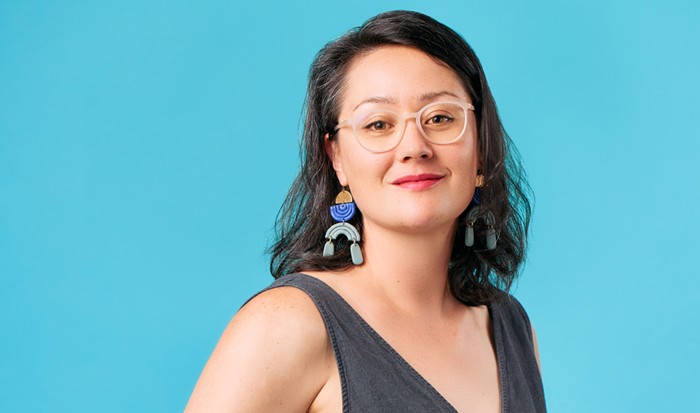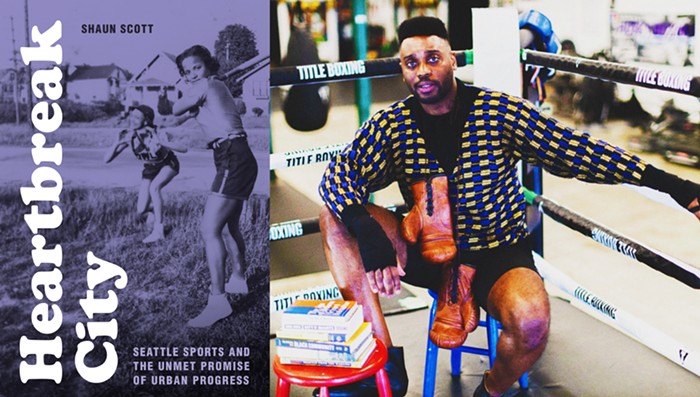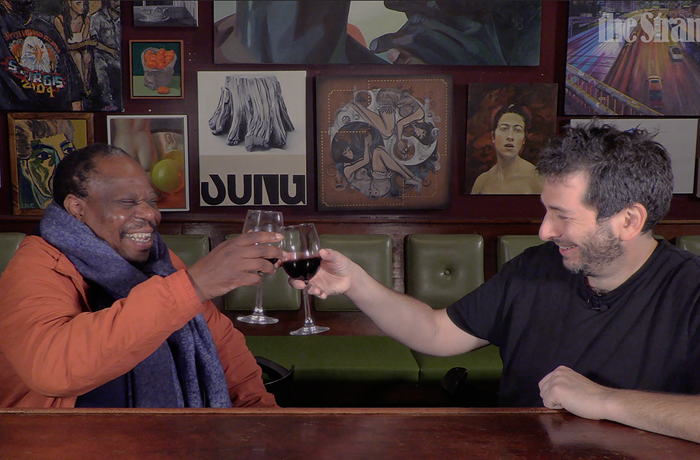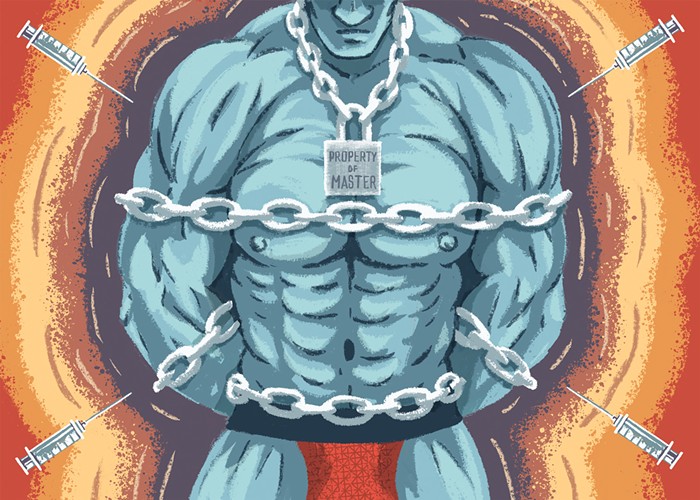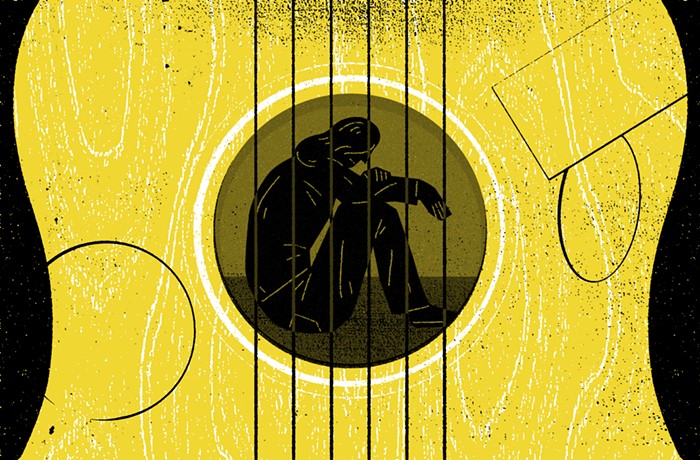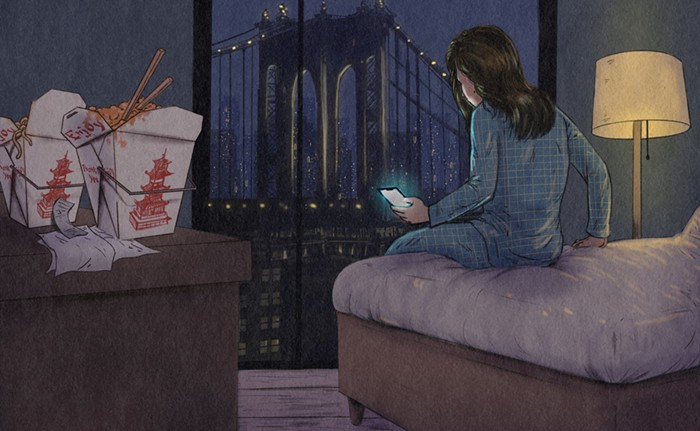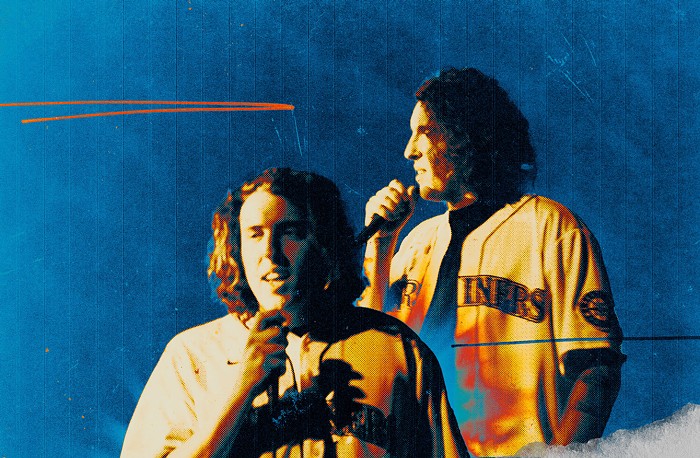For four years (1989 to 1993), Kim Thompson was one of my two bosses. Along with his business partner Gary Groth, he co-owned and co-ran Fantagraphics Books. Kim Thompson died in June. He was 56 years old.
With a small publisher like Fantagraphics, there is really no distinction between publisher and editor. There were many times I unloaded trucks full of books with Kim. He was in the trenches every day. When I started there, I was 25 years old, and Kim definitely seemed like my "elder." He was the right age to be a mentor. Now six years difference seems like nothing. It makes his passing all the more shocking.
I realize that readers might not understand why Kim Thompson was an important person—not just to me, but to art. The world of comics and the art world are distinct, intersecting only occasionally. The thing to remember is that for most of their existence, comics have been an art that existed primarily to make money. Some of the comics nonetheless were excellent pieces of art, but economic imperatives constantly drove the business side of comics toward assembly-line production, corporate ownership of creative work, and marketing to the lowest common denominator—all of which lessened artistic quality. In the 1960s, for the first time, underground cartoonists published comics whose main reason for existing was not economic. But this was a short-lived flowering—by the late 1970s, underground comics were nearly extinct.
Yet at the same time, comic book stores were popping up all over the country, as well as specialized comics distributors. Now it's hard to imagine spaces more uncongenial to "comics as art" than comics stores, which for the most part were run by corporate comics fanboys for corporate comics fanboys. But the door was opened a crack for small publishers, and publishers sprang up to take advantage of the opening. Fantagraphics, which had published a fanzine, The Comics Journal, started adding comics to its publishing program in 1981.
Comics as art were revived at that time, thanks in large part to the publishing efforts of Fantagraphics. They published Gilbert and Jaime Hernandez, Daniel Clowes, Chris Ware, Peter Bagge, Ivan Brunetti, Carol Tyler, and so many other great cartoonists, and are still doing it today. When you compare the publishing achievements of the underground comics generation (a brief brilliant flame) to Fantagraphics (and its peers, like Drawn & Quarterly), it's hardly a contest. Fantagraphics is one of the greatest publishers of comics in any language of all time and one of the strongest promulgators of the art of comics in existence. And Kim Thompson was crucial to that 30-plus years of artistic success.
Any artistic form needs its impresarios and enablers. Art dealers, curators, publishers, editors, etc.—without them, art can't flourish. Kim encouraged and cajoled many cartoonists to produce art they never otherwise would have dreamed possible. I imagine that if Fantagraphics had not been there in 1982, Jaime Hernandez might have gone on to a successful, respectable career as a penciller for Marvel and DC. Instead, he has created a body of highly personal comics art that broke many artistic barriers and places him in the pantheon of great artists of his time.
When I started working for Fantagraphics, I lived with Kim and Gary. For them, there was little distance between their private lives and their work lives. Fantagraphics bought a house that they both lived in, along with me and Kim's brother Mark. Once Kim acquired a girlfriend (Lynn Emmert, who subsequently became Kim's wife and who wrote moving journal entries detailing Kim's last months), he moved out of our testosterone-packed environment. Prior to that, his daily uniform was sweatpants and a T-shirt. Lynn gradually converted him to dressing like a responsible adult. Still, his casual wear set the tone for the Fantagraphics office—Tom Spurgeon once wrote that the dress code there was "pants."
Despite his aging fanboy wardrobe, Kim was a model of maturity. I remember when we had an upcoming issue of The Comics Journal with a Lynda Barry interview (November 1989). In it, we also ran an interview with Paul Chadwick. At the time, I complained that we should not be interviewing Chadwick because he was, to my mind, "totally mainstream." Kim wisely pointed out that while Chadwick may seem mainstream to you and me, for many comics readers, he was a radical alternative to what they were used to. He shook me out of my snotty smugness.
Another thing I remember about Kim was his love of music. He was always eager to be hip to whatever was happening right now. In our common work area where The Comics Journal was produced, Kim had a stereo and an ever-growing selection of CDs. It was the loudest office environment ever—and the selections would range from the Pixies to John Zorn to Body Count and beyond. (I was appalled the day Kim brought in Use Your Illusion.) And he liked to see live music; we saw Neil Young and Sonic Youth together, for example. But his greatest love was 1970s glam rock and especially David Bowie. Once a bunch of us went to Re-bar, the dance club. When the DJ cued up "Young Americans," Kim joyfully shouted out, while dancing, "This is the Motown of our generation!"
Kim and I stayed in touch over the years, mostly through e-mail. Our last correspondence was in January, discussing how to translate the title of Joost Swarte's Passi, Messa. I suggested Not This, That, but Kim wrote:
Yes, but graphically the two have to be the same length for it to work in the layouts.
You could say "Not This, But That" but it doesn't have the prescriptive implication. "Zo" means "in this way" but "this" can just mean "this thing."
"Not Like This, But Like That" gets the sense across, but then is clunky and unwieldy.
Well, we've got five months to figure it out. Maybe there's some popular expression I haven't remembered.
Tragically, he didn't have five months to figure it out. He never was a smoker, but somehow it was lung cancer that got him in the end. The same thing that got my dad. Kim was sort of a father figure for many young editors and designers who passed through the Fantagraphics offices, as I did. We all learned so much from him. I'm lucky to be able to say that he was my friend and mentor. ![]()
Robert Boyd, who has a BA in art and art history from Rice University, worked in comic book publishing in various capacities from 1989 to 2003. Now he blogs about art at The Great God Pan Is Dead (www.thegreatgodpanisdead.com).

